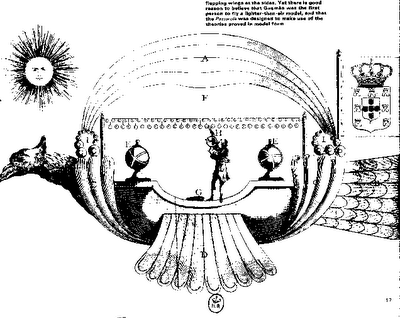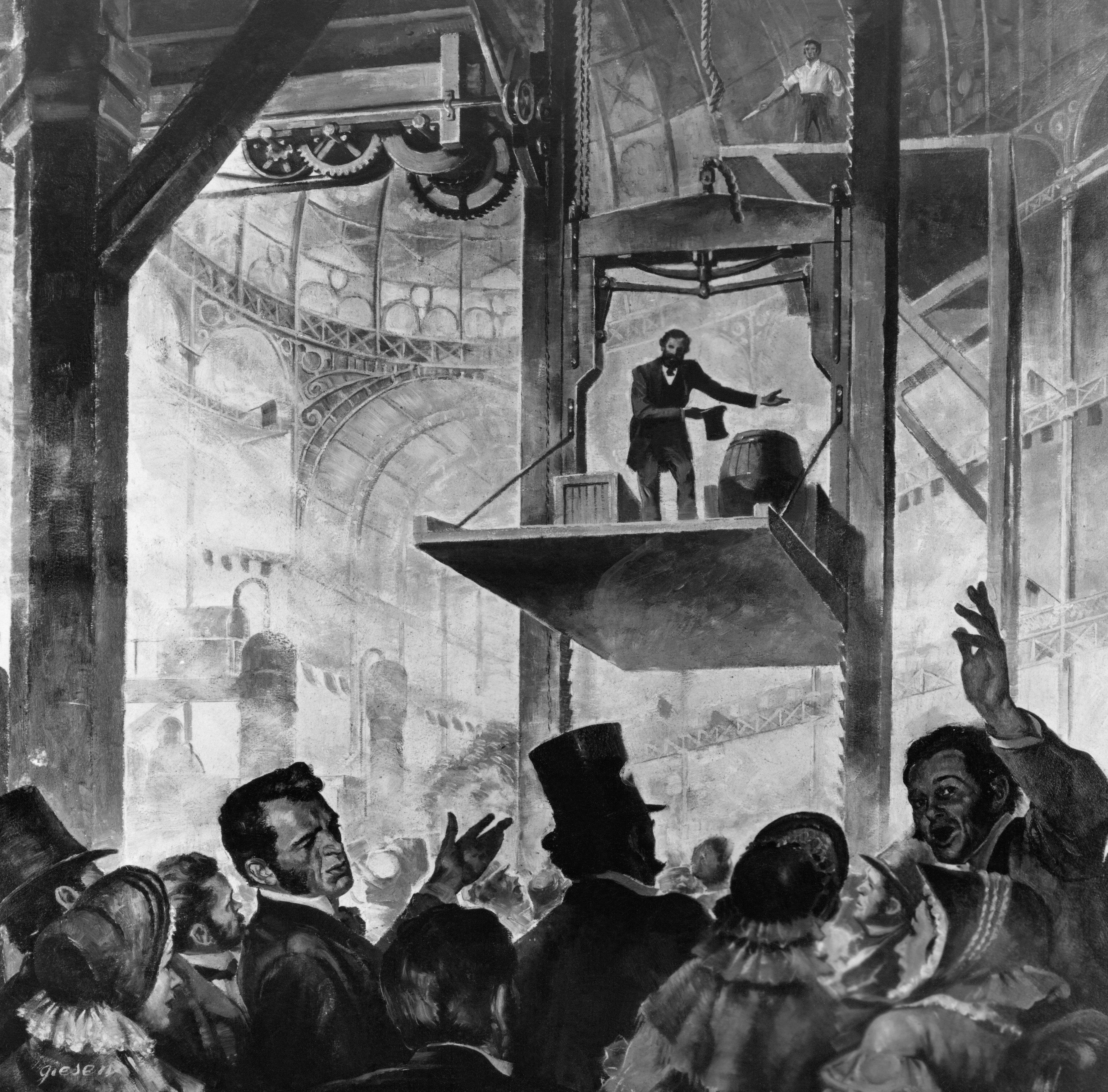|
Auditoria, as a depiction of The
Passarola
The Passarola, by father
Bartolomeu de Gusmão
Bartolomeu Lourenço de
Gusmão was born in December 1685 in
Santos, Brazil. He studied in Belém, Baía, joined the
Society of Jesus and moved permanently to Lisbon in 1708. Also in Brazil, excelled as an
inventor, having built a hydraulic pump that
raised the water from the river to the seminary
where he studied.
In 1709 had the idea of building a flying
machine, and sent a petition to king João V for
a patent on the income of an "instrument
invented to walk the air". The document lists
the advantages of the future development of his
invention, both for communication and for the
war and trade.
It is known that the king favourably dispatched the petition.
In the same year, in the first days of August,
Bartolomeu made several experiments before the
king and the court.
He was able to elevate in the air "over twenty
feet," in the words of a chronicler of the time,
"a globe of thick paper, with a bowl with
fire underneath."
This statement is all that is known for certain
about the experiences of Father Bartolomeu.
Without known reason, the experiments ended, but not that they have been a total failure. The chroniclers are unanimous in
describing the rise of these hot air balloons,
which very surprised the audience.
Some say that the abandonment of the experiments
was motivated by the tremendous ridicule that the
ignorant and envious made of his invention.
Judging by the drawings that remain, and the
documentation that survived the great earthquake
of Lisbon in 1755, Bartolomeu de Gusmão was
aboard his airship when she rose, becoming thus
the first man in the world to rise in the air
from a balloon.

The
depiction resembles Elisha Otis demonstrating
his elevator design with safety brakes at
the1854 New York World’s Fair.
The
fictional work of Azhar Abidi,
Passarola Rising
is a picaresque tale filled with evocative
detail, adventure, and suspense, set in
eighteenth-century Europe, which tells the story
of Bartolomeu and his brother Alexandre Lourenço, who use
their airship, the Passarola, as it
became known from a humoristic depiction of the
engine at the time, to escape the strictures of the Church,
the suspicion of the government, and the
intellectually stultifying climate of Lisbon.
| 